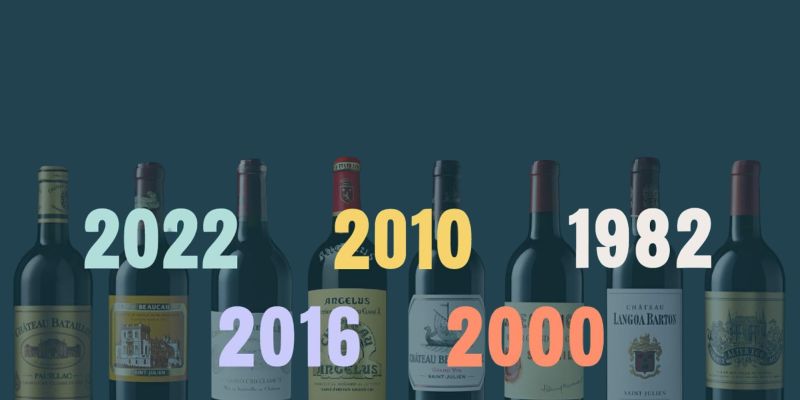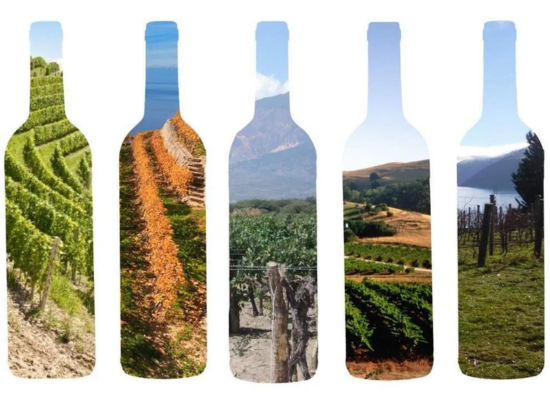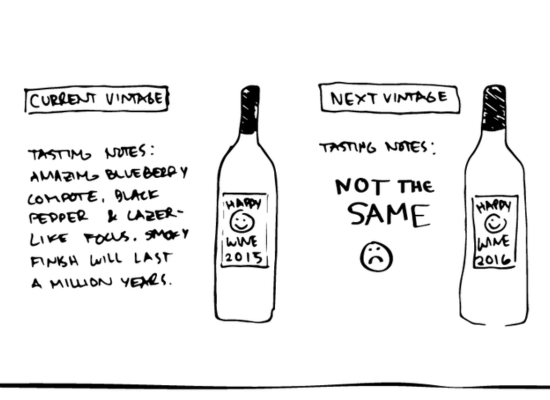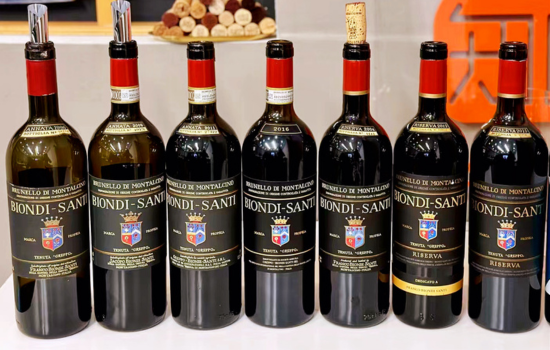Educating Sommeliers Worldwide.
By Beverage Trade Network

Wine is a living, breathing entity that is heavily influenced by its environment, especially the weather. While a bottle of wine from a particular region and vineyard might bear the same label year after year, the taste, aroma, and overall experience it offers can vary significantly depending on the vintage. This phenomenon, known as vintage variation, is a testament to the intricate relationship between wine and nature. For sommeliers and wine enthusiasts, understanding vintage variation is crucial for making informed recommendations and offering customers a nuanced wine experience. This article delves into the concept of vintage variation, explores its causes, and provides insights on how sommeliers can effectively communicate these differences to customers while guiding them to the best choices for their palate and occasion.
Vintage variation refers to the differences in the quality and characteristics of wine produced from the same vineyard but in different years. Depending on several factors, these variations can be subtle or pronounced, the most significant being climatic conditions during the growing season. Unlike other products, where consistency is often key to quality, the uniqueness of wine lies in its variability, which adds an element of discovery and surprise to each bottle. Here are some of the main factors contributing to vintage variation:
Weather Conditions: The most significant driver of vintage variation is the weather. Factors such as temperature, rainfall, frost, and sunshine hours directly impact the ripening process of the grapes. For instance, a particularly warm and dry year might result in grapes with higher sugar levels, leading to a wine with higher alcohol content and richer flavors. Conversely, a cooler, wetter year might produce wines with higher acidity and more restrained fruit characteristics.
Harvest Timing: The decision of when to harvest is critical. In years where the weather is unpredictable, winemakers may need to make tough decisions about whether to harvest early to avoid potential damage from frost or rain or to wait for optimal ripeness. This timing can greatly affect the balance of sugars, acids, and phenolic compounds in the grapes, which in turn influences the wine's flavor, structure, and aging potential.
Winemaking Techniques: While nature plays a significant role, the hand of the winemaker cannot be underestimated. In challenging vintages, winemakers might need to adjust their techniques to compensate for what the growing season has provided. This could involve changes in fermentation processes, blending decisions, and even the use of oak aging to add complexity or soften the edges of a more austere vintage.
Soil and Terroir: The unique combination of soil, climate, and topography, known as terroir, also contributes to vintage variation. Certain soils might retain more water during a dry year, providing the vines with necessary hydration, while others might drain too quickly, stressing the vines. The interaction between the terroir and the year's weather conditions can create distinct differences in wine from the same vineyard across different years.

Source: Winencsy
For sommeliers, one of the challenges is communicating the nuances of vintage variation to customers who may not be familiar with the concept. However, this also presents an opportunity to enhance the customer’s wine experience by guiding them through the complexities of vintage selection.
Simplify the Explanation: Not every customer will have a deep understanding of wine, so it's essential to communicate vintage variation in simple, relatable terms. Describing how weather impacts wine can be likened to how seasons affect the taste of fruits and vegetables – some years are better than others due to natural conditions.
Highlight the Story: Every bottle of wine has a story, and vintage variation is part of that narrative. Sharing insights about the particular challenges or triumphs of a given year can make the wine more interesting and personal to the customer. For instance, explaining how a cooler year produced a more elegant and refined wine can help customers appreciate the uniqueness of what they are drinking.
Tasting Notes Comparison: Providing tasting notes from different vintages can be a powerful tool. For example, a sommelier might offer a taste of a wine from a particularly warm year alongside one from a cooler year, pointing out the differences in flavor, structure, and aroma. This hands-on experience can be enlightening for customers and can help them understand why certain vintages are celebrated more than others.

Source: Wine Folly
When making wine recommendations, sommeliers should consider vintage variations and align their suggestions with customers’ taste preferences. By understanding whether a customer prefers bold or subtle wines, and staying informed about current and past vintages, sommeliers can guide them to the best choices, ensuring a satisfying wine experience.
Understand the Customer’s Preferences: When recommending wines, it's important to gauge the customer’s palate preferences. Some customers might prefer the bolder, fruit-forward profile of a warm vintage, while others might enjoy the more restrained, acidic qualities of a cooler year. By asking questions about the customer’s taste preferences, sommeliers can tailor their recommendations more accurately.
Suggesting Alternatives: In years where the vintage is less consistent or not up to par, suggesting alternatives from regions with more stable climates or from winemakers known for their skill in handling difficult years can be valuable. For example, in a year where Bordeaux struggled due to poor weather, recommending a wine from a more consistent region like Napa Valley, known for its relatively stable climate, can ensure customer satisfaction.
Utilizing Reputable Brands: Certain wineries have built reputations by producing high-quality wines regardless of vintage variation. Companies like Château Margaux in Bordeaux or Penfolds in Australia are known for their ability to maintain quality across different years, often through meticulous vineyard management and winemaking expertise. Recommending wines from these producers can provide a level of assurance to customers, especially in more challenging vintages.

Source: Terroir Sense
Vintage variation is an integral part of the wine world, adding depth, complexity, and character to each bottle. For sommeliers, understanding and navigating these variations is essential for making informed recommendations and enhancing the customer experience. By simplifying the concept, educating customers, and making tailored suggestions, sommeliers can turn the challenge of vintage variation into an opportunity to showcase the dynamic nature of wine. In an industry where no two years are the same, embracing vintage variation is key to appreciating the true artistry of winemaking.
[[relatedPurchasesItems-61]]
Header Image Source: Cult Wines